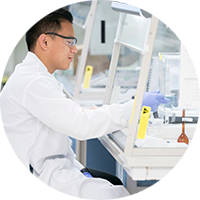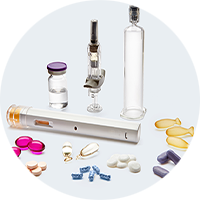
Nitrosamine Testing Services
FROM DISCOVERY TO PRODUCT LAUNCH
OVERVIEW
Key Capabilities Instrumentation Why Catalent
 Since 1991, Catalent’s small molecule analytical team has developed and applied thousands of analytical methods to help customers progress their drug candidates. Our standalone small molecule nitrosamines testing projects are managed through our facility in Morrisville, North Carolina, and leverage Catalent’s network of over 3,000 scientists and technicians, combining the benefits of a focused, single-site solution, with the scientific resources of a multi-disciplined product development and research network.
Since 1991, Catalent’s small molecule analytical team has developed and applied thousands of analytical methods to help customers progress their drug candidates. Our standalone small molecule nitrosamines testing projects are managed through our facility in Morrisville, North Carolina, and leverage Catalent’s network of over 3,000 scientists and technicians, combining the benefits of a focused, single-site solution, with the scientific resources of a multi-disciplined product development and research network.
Nitrosamine impurities are a class of compounds considered probable human carcinogens. These compounds are subject to various FDA, EMA, and other regulatory requirements typically requiring levels below an allowable intake limit between 26.5 and 1500 ng/day depending on the specific nitrosamine. All drug products are subject to the new regulatory testing requirements including commercial products and products that were submitted prior to the issuance of the regulatory guidance. In order to avoid routine testing of the drug products, regulatory guidelines require the level to be less than 10% or 2.5 -150 ng/day (allowable intake level).
KEY CAPABILITIES
Catalent’s Organic Spectroscopy group has several years of experience with quantitation of both the common solvent related nitrosamines and developing test methods for the Nitrosamine Drug Substance Related Impurities (NDSRIs). The group uses an in-house separation and triple quad mass spectrometer method for the common solvent related impurities achieving limits of quantitation as low as 0.3 ng/mL. The group has experience adapting both LCMS compatible and non-LCMS compatible related substance methods to detect NDSRIs to the required level. Due to the low allowable limits triple quad LCMS is generally required.
INSTRUMENTATION
- Sciex API 5000 triple quadrupole mass spectrometer
- Waters Acquity H-Class UPLC
- Waters Xevo G2-XS Q-Tof mass spectrometer
- Waters Acquity H-Class UPLC
WHY CATALENT
 Global Leader our long track record of drug development and manufacturing, including 170 product launches annually, keeps us abreast with emerging regulatory requirements and guidelines.
Global Leader our long track record of drug development and manufacturing, including 170 product launches annually, keeps us abreast with emerging regulatory requirements and guidelines.
Customized Approach standardized approach for common solvent related nitrosamines and full method development for NDSRI’s.
Expertise highly skilled Ph.D. scientists with decades of experience in trace level analysis and regulatory requirements for filings.
Complete Suite of Analytical Services from early preclinical through clinical and commercial stages, Catalent delivers a single-provider solution for all your analytical needs.
